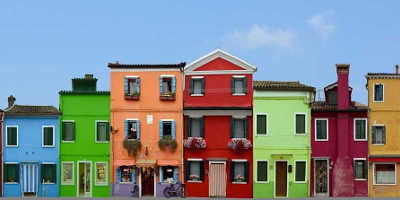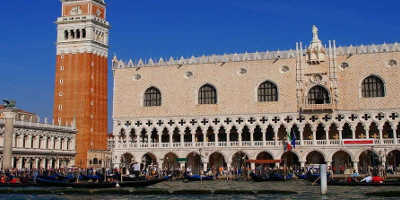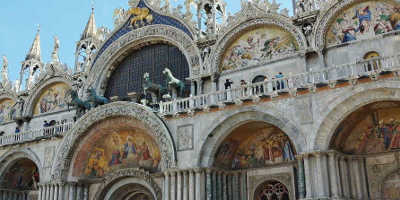How do people get around Venice?
Built on a lagoon, with canals rather than roads, Venice is the leading ecological mobility city in Italy. So what’s their secret? How do the people of Venice get around?
Being built atop of 118 islands, the Venetians have only ever had two choices when it comes to travel – via water or on foot. Just like it was centuries ago, Venice remains a car-free zone, relying on boats instead of cars for imports and travel. If you’re about to go on your first trip to Venice you’re probably wondering how am I going to get around? Well, there are a few different options, we’ll talk you through, so you are fully prepared for your trip.
-
Walking
Surprise surprise, the quickest and cheapest way to get around Venice is on foot. With no roads, the city is compact and easily walkable with many sites in close proximity to each other. Bring your comfiest shoes to get your stroll on as you walk and talk through this romantic city. Not only is this going to get your fitness up, it’s also a great way to explore the city for free, and the best way to stumble across the non-tourist spots. Just make sure you bring a handbook or local map with you, so you don’t get too lost. By going on foot you can experience Venice like a real Venetian, whilst discovering some of the city’s hidden gems. It also gives an excuse for more food! With all that walking you’ll need to refuel yourself, we’re sure an ice-cream or two will do the trick…
-
Vaporetto Boats
Another reason Venice is so environmentally friendly is because of their public transport, which encourages all to make use of the same vessels. A good example of this are the vaporetto boats, one of the main sources of transportation through the city. Vaporetto’s are reasonably large waterbuses that travel between Venice and the nearby islands.
The Vaporetto are run by ACTV, a company responsible for public transportation in Venice. The service has 22 scheduled lines as well as a Night Line, making this a 24-hour service. The main line is service 1 that runs on the Grand Canal. The waterbus stops here every 10 minutes, with single tickets costing 7.50 euros. You can buy one-off tickets from the vendor machines located by most of the waterbus stops, or from the ticket offices dotted around the city. If you’re going to be in Venice for a few days, you might want to consider purchasing a Tourist Travel Card. These are timed passes usable from the moment they’re validated. There are a few different options depending on how long you’re going to be in Venice. You can choose a 1-day pass, or even a week-long one. A 1-day travel card costs 20 euros, and a 7-day card costs 60 euros. Although this seems like a lot, it gives you unlimited travel on nearly all ACTV land and water services and includes the transport of one luggage item. You’ll almost definitely save money this way, as it’s likely cheaper to buy a pass that gives you unlimited travel rather than spending 7.50 for every single journey you make. Additionally, single tickets are only valid for an hour and 15-minutes, meaning you have to be very careful about when you validate them, so they don’t become invalid before you travel.
For more long-term stays, consider buying a Venezia Unica card. This is a personalised city pass, valid for up to two years, which allows you to choose what services you want the card to provide you with. When you sign up and create your card online you can select different services from public transport, to tourist attractions and airport transfers. This allows you to access multiple services using just one card. Prices of the card vary depending what services you get included.
-
Water Taxi
If you’re looking for a more efficient way to get around Venice, then you could consider water taxis. These are almost exclusively used by tourists because of their higher price tag. These taxis are the Rolls Royce of the water, providing speed and luxury. They offer spacious leather seats, upholstered cabins and open-air seating in the stern. Tourists are attracted by the experience as well as the transport that these water taxis offer, despite coming at a higher cost. Prices vary depending on distance, time of day, number of people in the taxi and whether you’ve hired it in advance or not. To give you an indication however, a trip within the historic centre can cost between 40 – 100 euros. Perhaps something not to take all the time, but if you want to treat yourself to a great experience whilst getting from A-B this is the perfect option.
-
Gondola
A mode of transport that has become iconic to Venice is the gondola. A flat-bottomed rowing boat that has existed in Venice since the 11th century is perfect for manoeuvring through the Venetian lagoon. Propelled by a gondolier, you are sure to be in good hands as they steer you through Venice acting as the boat’s rudder. Once used as a major means of transport, these elegant vessels are now used to carry tourists on rides at fixed rates. Due to being such a popular tourist activity, gondola rides during the day cost around 80 euros, and up to 100 euros at night. Unlike water taxis and vaporetto’s, gondolas are not primarily used to get somewhere, but we still thought them worthy enough to include them on this list. It is an unforgettable way to experience Venice, giving you a taste of the city’s history as you glide through the water with beautiful views surrounding you.
-
Traghetto
Or traghetti in Italian, is another type of gondola service which acts as a small ferry over the Grand Canal and is frequently used by locals. This is a much cheaper option to the romantic gondola rides specified above, although is primarily used to cross the Grand Canal between its widely spaced bridges, rather than for a peaceful bit of sightseeing. Traghetto rides cost only 2 euros for non-residents and typically operates from 9am – 6pm. A very useful and affordable way to explore the city.
Accessibility
It is understandable why travellers who require mobility aids may be intimidated by Venice, so we’re here to reassure you and be clear about your options. Our first tip would be to plan ahead. As Venice has a lot of steps and bridges we recommend heading to the Venice Tourist Office (Azienda di Promozione Turistica di Venezia) to get your hands on a free map or brochure designed especially for disabled tourists. These will inform you on the best routes to take around the city, letting you know which bridges have ramps and what locations or attractions have lift access as well as the appropriate facilities, such as accessible toilets. Vaporetto boats are wheelchair friendly and as mentioned above, are very useful when getting from one neighbourhood to another. They are designed to float at the same level as the dock making the transfer between them easier. We also strongly advise wheelchair users to beware of the acqua alta or “high water” which occurs between late October and early spring, as it could mean being stuck in your hotel waiting until the tide goes down.
We hope this guide has given you some insight into Venice life and answered any questions you had on how to get around. As you can see there are a number of options available to you, making your trip easy and comfortable. Please also note that we run our own Venice Gondola Tour at a competitive rate, which includes breathtaking views of the Doge’s Palace and St Mark’s Belltower.
Related article: Best time to visit Venice






